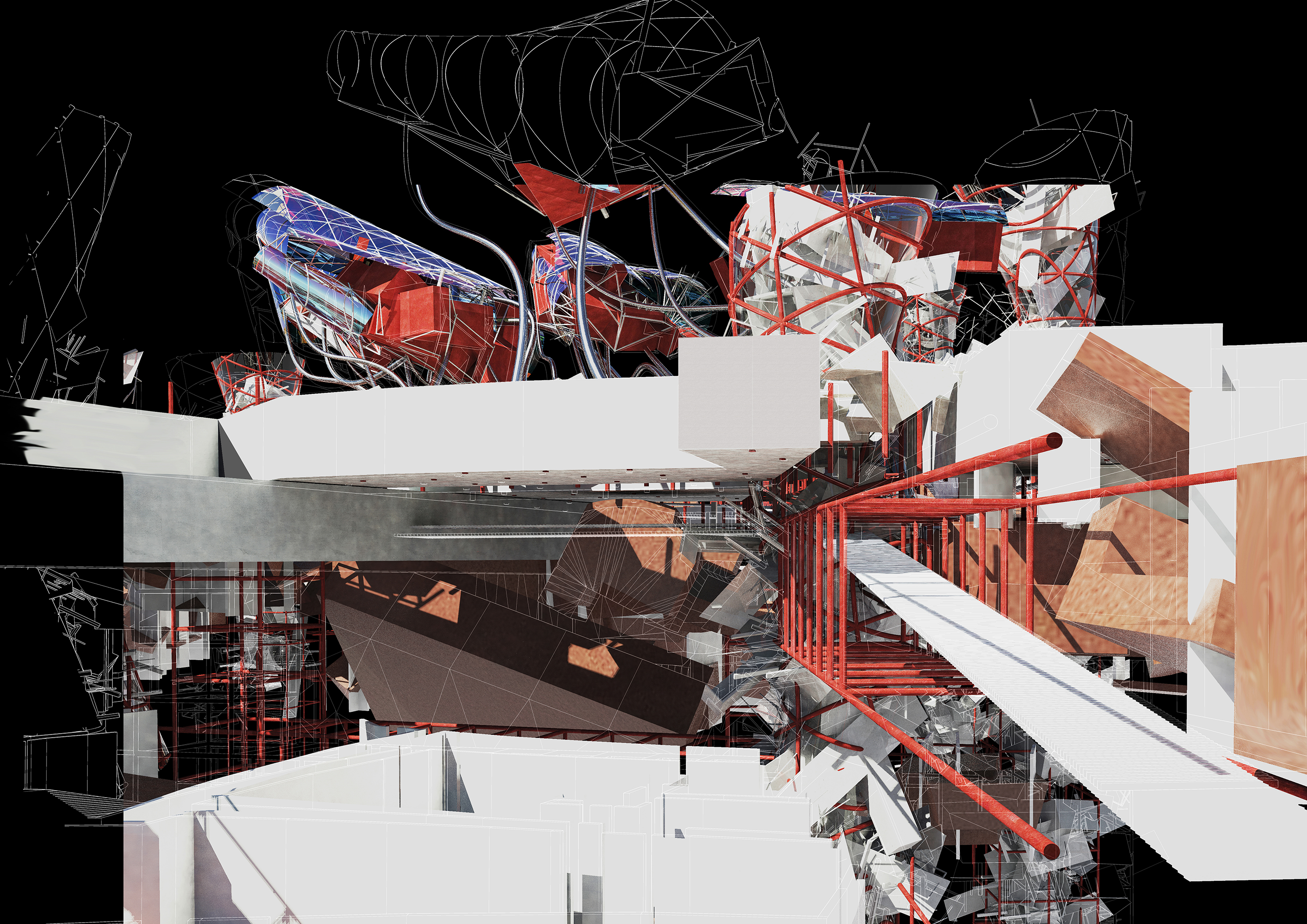Dissolution of Reality was conceived as an intervention into the Post-war reconstructed part of Frankfurt, forcing the
humans to abide by state planning constraints, eventually resulting in four storied-extruded volumes of its footprint.
The outcome was a Sentient City assembling a Hybrid to correct its fractured physicality and memory.
The Hybrid of this City defies conventional aspects of the urban fabric and its architecture emerging from the primitive part of a city as an ‘anomaly’ in decay, gaining and losing not just its physicality but also its value possessed over the
period. This anomaly is systematic and will keep propagating and deteriorating the immediate surrounding of the city to give rise to new forms of tectonics, as the city is in itself a typology. It grows and decomposes from time to time,
human intervention affecting its context nonetheless. It is in a perpetual process of extracting and losing elements that
trigger itself to evolve.
Gestalt psychology talks about the nature of the fragments, including their position and number, influencing a perceptual whole. Emphasizing dissolution is an act of understanding the whole by exploiting the form and content of the
fragment, irrespective of its number or position. Each part has its characteristics and linkage corresponding more to
the whole than the whole in totality.
The dissolution into fragments has resonance and adds value to the whole. It is ambiguous with limitless directions. It gives an insight into the autonomous decision of authority in perceiving the reality outside and within oneself.




